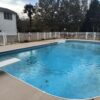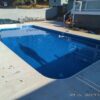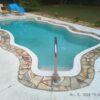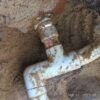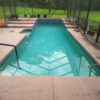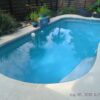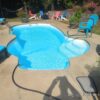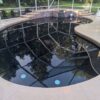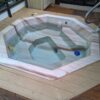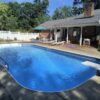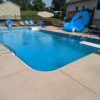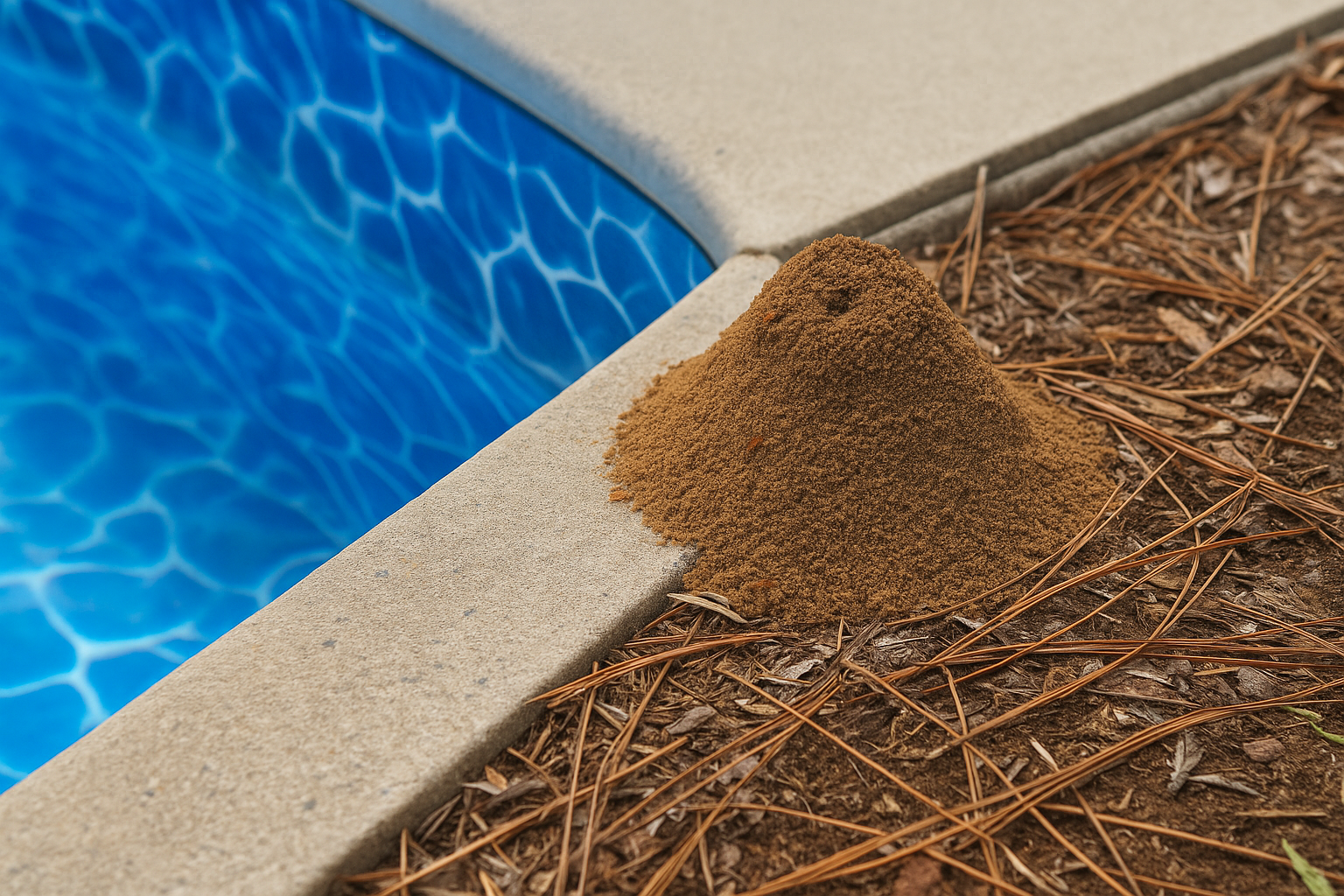Introduction
Cone and dye testing? What is it and why does it matter to me. Well, in the wet and wild world of swimming pool maintenance, detecting and addressing pool leaks is an under utilized and often overlooked aspect of ensuring the longevity and functionality of your pool. That is, until you step outside, looking forward to a refreshing dip, only to find out that a wading pool’s worth of water is all that remains in your summertime backyard oasis. At this point, swimming pool leak detection becomes a recognized regimen that should always be in your bag of standard splash worthy services. Although swimming pool leaks can be a pain in your backyard area, finding and resolving the elusive water loss issue doesn’t have to be. That’s where Aquatrace comes into play.
Utilizing the most up to date equipment options on the market to properly and precisely diagnose any water loss issue that your lagoon of luxury may experience, a quick call, email or click will have your pool on the road to a recovering refill faster than you even realized your pool had turned into a pitiful puddle. While we are equipped with an arsenal of water loss detective tools, one of the simpler tests that Aquatrace Swimming Pool Leak Detection performs is what is known as Cone and Dye Testing. This technique is particularly effective for quickly identifying leaks that are located in more readily accessible plumbing penetrations below the water level. In this article, we’ll explore the principles and processes of Cone and Dye Testing, an essential tool in the arsenal of Aquatrace Swimming Pool Leak Detection.
The Basics of Cone and Dye Testing
Cone and Dye Testing is a straightforward yet ingenious method used in swimming pool leak detection. The primary objective is to establish a closed system within the pool’s plumbing lines to identify the presence of leaks. This method is effective for pools of all types and sizes, making it a nearly universal applicable leak detection test.
Creating a Closed System
The process begins with the sealing of associated plumbing penetrations below the current pool water level. This is achieved using soft tapered cones, which are specifically designed to fit snugly into these openings. By inserting these cones into the proper combination of your pool’s supply and return ports, a closed system within the plumbing line is established. Properly performing this step is crucial as it separates and isolates the different segments of the plumbing system, making it sufficient to detect any inline pool plumbing leaks.
The Role of the Dye
Once a properly separated closed system is created, a special cone with a small opening is then used. This opening is connected to a clear tube, which allows for the introduction of a non-toxic, colored dye into the plumbing system. The dye used in this test is typically bright and easily visible, such as a fluorescent green/yellow, blue or red, to ensure clear visibility against the backdrop of pool water and finish materials.
Detecting the Leak
The science behind the test is simple yet very effective. If there is a leak somewhere below water level within the plumbing, the water inside the line will naturally be drawn towards the area of lower pressure created by the leak. Since all other openings are sealed, the only direction for the water (and dye) to move is towards the leak. As the dye is introduced to the clear tube of the special introductory cone, it gets pulled into the introductory cone and travels into the plumbing towards the actual leak location. Once the damaged area of plumbing has been isolated (i.e. skimmer line, vacuum line, main drain line, return line, water feature line, etc.), a separate pressure test will be performed to further isolate and pinpoint the exact location of the water loss area.
Advantages of Cone and Dye Testing
- Precision: This method offers a high degree of accuracy in isolating the exact section of plumbing line that is contributing to the water loss.
- Simplicity: Cone and Dye Testing is relatively easy to perform and does not require complex equipment to get a general idea of leak location.
- Non-Invasive: Similar to other leak detection methods utilized by Aquatrace, this test does not require digging or drilling, thus preserving the integrity of your pool area.
- Time-Effective: By quickly and accurately diagnosing a problematic leak area, this method saves time in pinpointing your water loss culprit.
The Limitations of Cone and Dye Testing
While cone and dye testing is a highly effective method for isolating leak areas within underground and concealed swimming pool plumbing, it’s important to understand its limitations for a complete perspective. As with any diagnostic tool, certain conditions can affect the accuracy of the test results.
Potential for False Positives with Cone and Dye Testing
One such limitation arises from the potential of a siphon effect elsewhere in the filtration system. This can occur when the water movement within the system, unrelated to an actual leak, draws the dye towards a specific area. Such occurrences can lead to false positives – indicating a leak where there isn’t one. This phenomenon underscores the need for professional expertise in interpreting the results of the test. Specialists at Aquatrace Swimming Pool Leak Detection are trained to recognize such anomalies, ensuring that the findings are accurate and reliable.
Challenges with Plumbing Leaks Above Water Level
Another consideration is the test’s effectiveness in identifying leaks that occur above the water level. Since cone and dye testing relies on the movement of dye within the water-filled plumbing system, any damage or cracks in the plumbing that are above the water level will not be detected by this method. This can lead to false negatives, where a leak still exists but is not identified by this test. In such scenarios, other methods of leak detection, such as pressure testing or an internal camera survey, may be employed to ensure a comprehensive and accurate assessment.
Complementary Testing Methods
To address these limitations, Aquatrace Swimming Pool Leak Detection often combines Cone and Dye Testing with other diagnostic techniques. This multi-faceted approach ensures a thorough examination of the pool and its plumbing system. By using a combination of tests, we can accurately pinpoint leaks, regardless of their location or the complexities of the pool’s design.
The Importance of Professional Assessment
The nuances of leak detection highlight the importance of having a skilled professional conduct these tests. The experts at Aquatrace are adept at using Cone and Dye Testing in conjunction with other advanced methods to provide a complete and accurate diagnosis. This expertise is crucial in ensuring that your pool receives the proper care and maintenance it deserves.
Conclusion
While Cone and Dye Testing is a valuable tool in the detection of swimming pool leaks, it is most effective when used as part of a broader and sophisticated diagnostic strategy. Understanding its limitations is key to ensuring the health and longevity of your swimming pool.
If you suspect your pool has a leak or if you want to ensure it’s in top condition, don’t hesitate to contact Aquatrace Swimming Pool Leak Detection. Our team of experienced professionals is equipped with the knowledge and tools to accurately diagnose and repair any leaks, ensuring your pool’s longevity and your peace of mind. Give us a call today at 1-888-896-AQUA for an expert consultation and keep your pool at its best!









